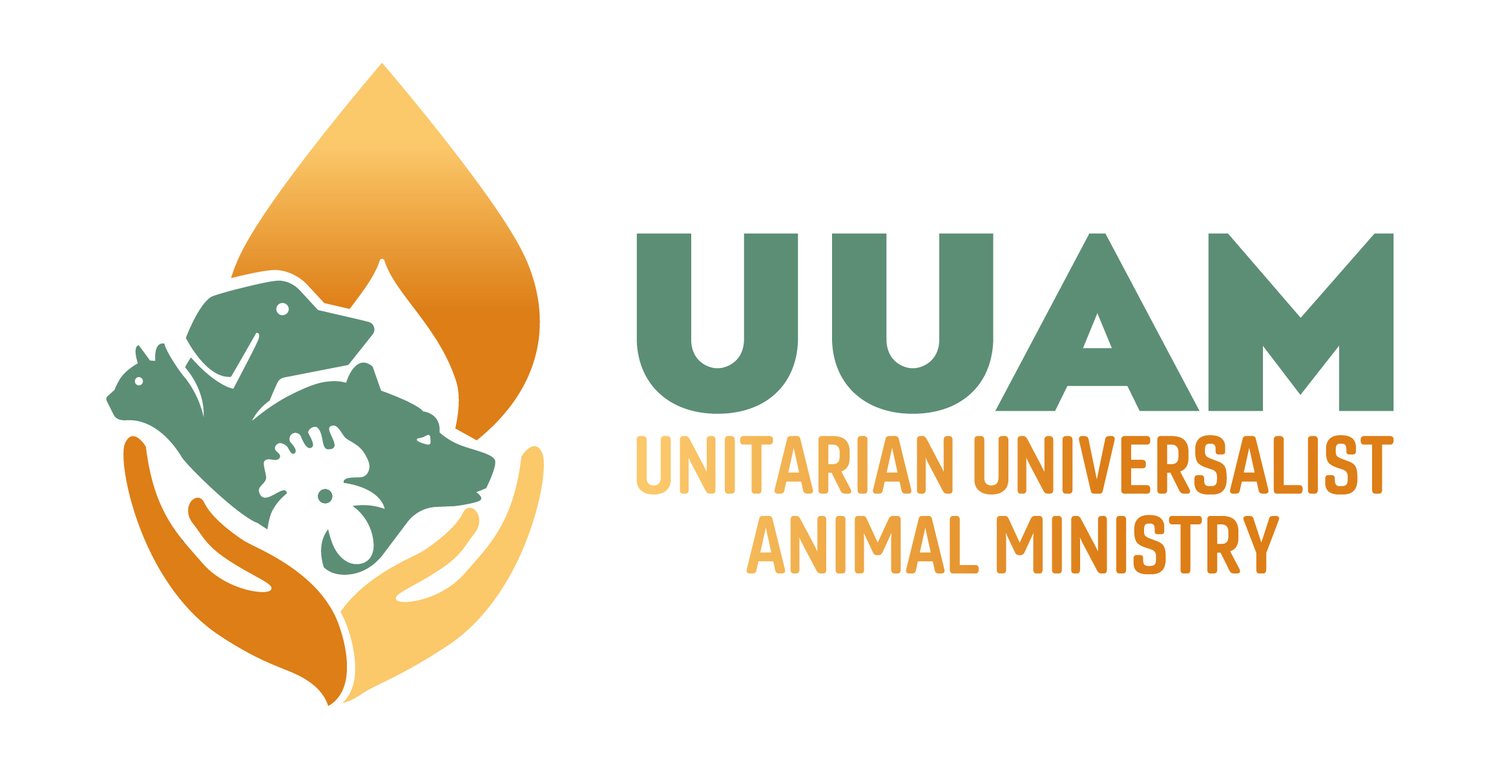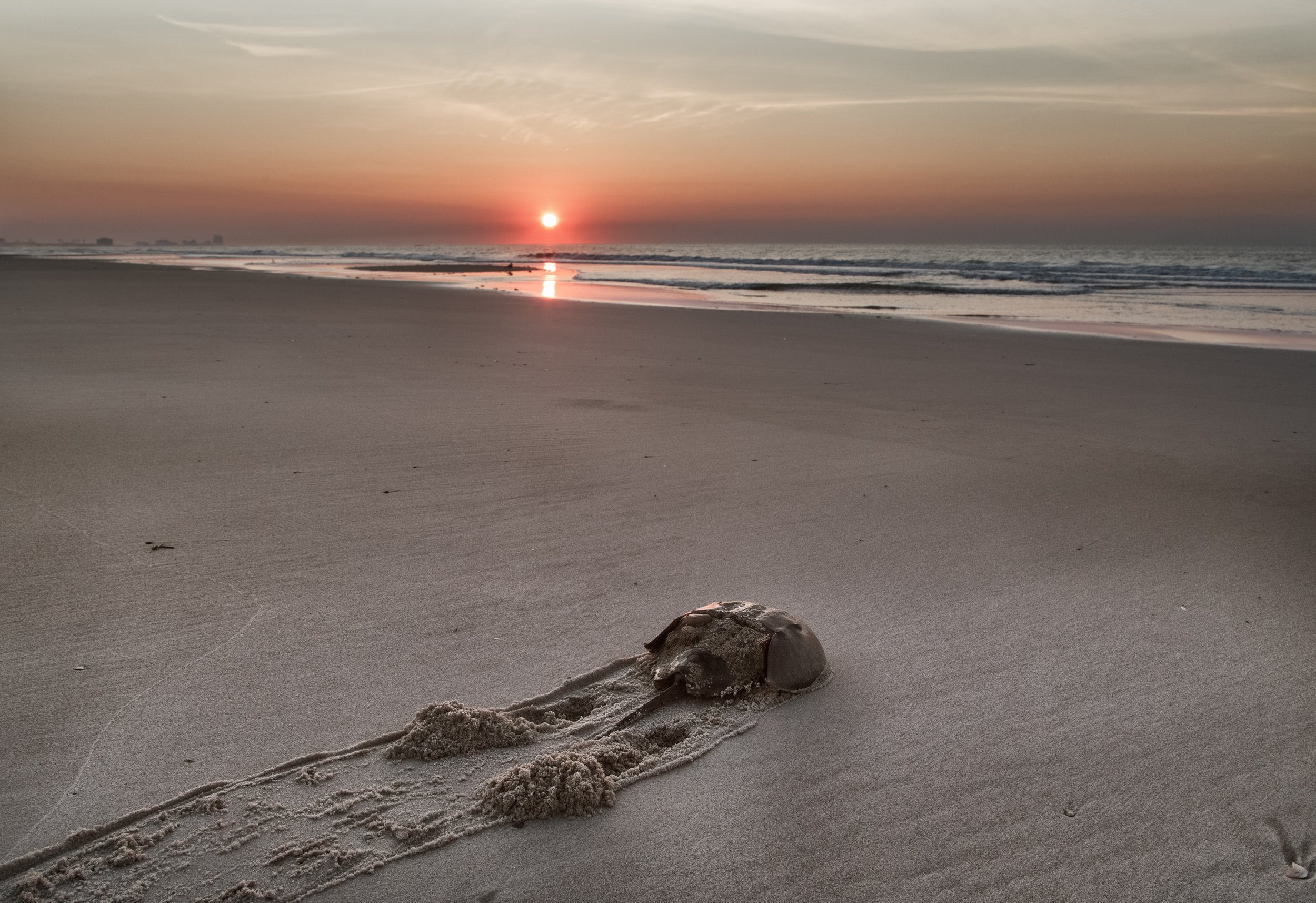Horseshoe Crab
Over the past several months, Featured Wildlife has covered many impressive animals, such as a snowshoe hare that can outrun an avalanche, leatherback turtles able to dive down 4000 feet, prairie dogs with precise language to describe intruders, and sifaka lemurs able to effortlessly glide across high jagged peaks. But the most impressive of all animals could well be the horseshoe crab—certainly not the center of attention in the animal kingdom, but truly remarkable.
First a few quick facts:
—They are actually not crabs at all, but instead more closely related to spiders and scorpions (yet unlike them, no horseshoe crabs are venomous).
—Of the four species, one is in North America along the Atlantic and Gulf coasts from Maine to Mexico, with three others in Southeast Asia. The greatest concentration of horseshoe crabs in the world is in the Delaware Bay.
—They can grow to 24 inches (including the tail) and live up to 20 years. Their protective shells (which they shed multiple times as they grow) are made of a hard cellulose-like material, and ten eyes distributed around their body help with navigation.
—They come ashore to spawn every year from late spring to early summer. Each female can lay up to 4,000 eggs at a time and 88,000 per nesting season. That’s a helpful adaptation because the vast majority of the eggs and hatchlings are consumed by migratory shorebirds.
—Native Americans found that their shells made effective fertilizer for crops, which they passed on to European settlers. That led to extensive harvesting of horseshoe crabs in the Delaware Bay especially in the late 1800s through the mid 1900s—when chemical fertilizers were developed. To further protect horseshoe crabs, Delaware and broader Atlantic coalitions have broadened resource protection plans, and since 2002 the once ill-treated horseshoe crab has been Delaware’s official state marine animal.
—Unfortunately for them, their bright blue blood was discovered in the 1950s to contain a unique enzyme that is highly sensitive to detecting deadly bacteria, a property then used by the biomedical industry to test the safety of medical products for humans. Since FDA approval in the 1970s, blood drawn from horseshoe crabs (and then they are returned to the water) has become the official method in the industry for determining whether injectable medicines, vaccines, and transplants are free of endotoxins and safe for humans. Only within the last few years has a synthetic testing agent been approved by FDA, but the shift to that has been slow.
Despite being eaten by shorebirds, harvested for their shells, having their blood used in medical testing, and more, they are survivors, with IUCN not considering the Atlantic species endangered though still threatened. Conservation efforts have expanded in recent years, including the work by the Horseshoe Crab Recovery Coalition, whose members include the National Wildlife Federation and Defenders of Wildlife.
Now, for the question of what makes them really special: They are, by far, one of the longest-living animal species ever (only a few others like sponges and jellyfish might be older), basically unchanged for more than 450 million years—hence the name, “living fossils.” (By contrast, dinosaurs only came into existence 230 million years ago and modern humans originated 250,000 years ago.) Since the most primitive animal forms first appeared on Earth some 550 million years ago there have been five mass extinctions —horseshoe crabs survived them all. The first mass extinction, some 440 million years ago, was likely caused by mass glaciation and killed off 85% of all species (mainly sea animals)—horseshoe crabs survived. The next one, 360 million years ago, caused by decreased ocean oxygen levels, killed off 75% of all species—but they survived. Then the third mass extinction, 250 million years ago, known as the “Great Dying,” was caused by rampant volcanism and wiped out 90% of all species—they survived. Then the fourth, also likely caused by volcanism, killed off 80% of all species 200 million years ago—they survived that one too. And then the fifth, most well-known mass extinction, caused by an asteroid collision with Earth 66 million years ago, killed off 75% of all species (most notably all non-avian dinosaurs)—but horseshoe crabs survived.
Different explanations are given for their remarkable survivability, including their ability to miniaturize and their special blood that allows them to survive under very low oxygen availability. But whatever the reason, they are clearly one of the most successful animal species ever out of the estimated 5 billion species that have existed over Earth’s total history. With many experts talking about the sixth mass extinction now underway, caused by human activity making Earth increasingly unlivable, possibly even for humans, these unassuming, easily overlooked but remarkable survivors may again be one of the few species to make it through to the other side. When we look at a horseshoe crab we are looking well into the past, but we could also be looking well into the future.


